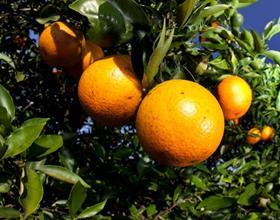
A US$1m University of Florida (UF) research project to fight citrus greening disease has been given the green light in the state’s budget.
Nian Wang, a researcher with UF’s Institute of Food and Agricultural Sciences, is working with a team to develop a microbial-based product, infused with patented plant-defense inducers and beneficial bacteria strains, that he hopes will cure citrus greening.
“While the product will substantially help the citrus industry in the US and around the world combat greening, it is not a complete cure, as of yet,” Wang cautioned.
Wang, a microbiology and cell science professor at the UF Citrus Research and Education Center, will also work on creating greening-resistant trees through the use of targeted genome engineering technology. Wang’s laboratory is the first to successfully modify the citrus genome using this technology.
The technology will be used to create greening-resistant trees by locating the genes within citrus trees that are activated by greening and then effectively removing those genes or altering them so the trees will activate an immune defense against infection. The technology will also be used to introduce encoded plant host-defense antimicrobial peptides, part of the innate immune response found among all classes of life, and resistance genes against the citrus greening pathogen.
Citrus greening bacterium first enters the tree via a tiny bug, the Asian citrus psyllid, which sucks on leaf sap and leaves behind the greening bacteria. The bacteria then move through the tree via the phloem – the veins of the tree. The disease starves the tree of nutrients, damages its roots and the tree produces fruits that are green and misshapen, unsuitable for sale as fresh fruit or, for the most part, juice. Most infected trees die within a few years and the disease has already affected millions of citrus trees in North America.
Citrus greening was first detected in Florida in 2005. Between 2004 and 2011, the Florida commercial citrus acreage and the number of trees decreased by 28 per cent, with greening one of the major reasons for this loss, along with development. Early fruit drop, which caused an average citrus production loss of 10 per cent in 2012, was another consequence of greening disease in Florida. The citrus industry, in Florida alone, has lost approximately 100,000 citrus acres and US$3.6bn in revenues since 2007, Wang said.
Although current methods to control the spread of citrus greening are limited to the removal and destruction of infected trees, UF/IFAS researchers are working to defeat it on a number of fronts, including trying to eradicate the psyllid, breeding citrus rootstock that shows better greening resistance and testing treatments that could be used on trees.
In initial field trials, Wang’s current product formulation has shown 'unprecedented positive results', with an approximately 25 per cent decrease in the disease severity of greening. The product also increases the trees’ root growth and strength, build internal immunity to the disease, and prolong the life of the trees beyond anything currently on the market.
“Dr Wang’s research on managing greening is cutting-edge science based on new technology that was not possible as recent as ten years ago,” said Michael Rogers, interim director of the Citrus Research and Education Center in Lake Alfred, where Wang works. “While no one knows for certain what the final solution to HLB is going to turn out to be, we are appreciative of the funding that has been provided for this project that may ultimately provide the answer to greening needed by Florida citrus growers.”
The project will take three years to complete, with a start date of 1 July 2015, and an anticipated end date of 30 June 2018.



